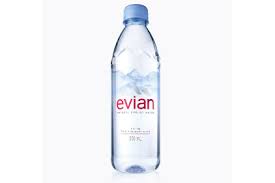15
Jul
Evian Bottled Water, Touted for Its Purity, Tainted With Toxic Fungicide Pervasive in the Environment
 (Beyond Pesticides, July 15, 2020) Evian bottled water is supposed to be so pure that scientists will calibrate their measuring devices with it. But new data from Swiss researchers finds it to be contaminated with a toxic fungicide. “The fact that even the Evian springs in the French Alps, which are hardly affected by humans, contain pesticide residues is alarming and shows the far too careless handling of these substances,” Roman Wiget, president of the international drinking water association AWBR told the German-language Swiss weekly.
(Beyond Pesticides, July 15, 2020) Evian bottled water is supposed to be so pure that scientists will calibrate their measuring devices with it. But new data from Swiss researchers finds it to be contaminated with a toxic fungicide. “The fact that even the Evian springs in the French Alps, which are hardly affected by humans, contain pesticide residues is alarming and shows the far too careless handling of these substances,” Roman Wiget, president of the international drinking water association AWBR told the German-language Swiss weekly.
Researchers looked specifically at the levels of the fungicide chlorothalonil in Swiss waterways, as Switzerland and the European Union took steps last year to ban use of the pesticide. In banning the chemical, regulators at the European Food Safety Authority (EFSA) noted, “Great concerns are raised in relation to contamination of groundwater by metabolites of the substance.” EFSA designated the fungicide as a 1B carcinogen, meaning that it “may cause cancer.”
Chlorothalonil has been in production and use since the 1960s, but it is only now that regulators are starting to take a closer look at its health and environmental impacts. In addition to cancer, chlorothalonil is neurotoxic, can harm the human reproductive system, damage kidneys, liver and other organ systems, and irritate skin. Recent research has focused on the fungicide’s effect on pollinators, showing that it can alter honey bee microbiomes, reduce bumblebee colony size, and may even be a factor in ongoing pollinator declines.
While EU officials continue to scrutinize long-used chemicals, regulators at the U.S. Environmental Protection Agency (EPA) have done little to address chlorothalonil, the 10th most commonly used pesticide in the county. In fact, EPA is several years late on a workplan it set for itself on the fungicide. The agency estimated it would open a review document for the chemical in 2016, but the most recent action taken, according to the agency’s docket folder on regulations.gov, was a meeting with the chemical’s primary registrant Syngenta/ChemChina.
While EPA is behind on removing pesticides from drinking water sources, in the United States it is the Food and Drug Administration (FDA) that regulates bottled water. FDA generally follows EPA guidelines on setting allowable levels of certain pesticides, but oversight is lacking in many areas. For example, while public water systems are required to undergo quarterly testing from certified labs, bottled water is only required to be tested once a year, and the tests are not required to come from certified labs. Bottled water manufacturers are also not required to report violations to state or federal officials.
Generally, a home water filter will successfully remove most hazardous contaminants from tap water, and should be preferred over plastic and expensive bottled water. Researchers note that reverse osmosis or a fresh activated carbon filter (changed at regular intervals), would adequately remove the levels of chlorothalonil found in Evian. But few are likely to take their bottled water and put it through another level of filtration.
The best way to eliminate pesticide contamination in drinking water is to remove the source of contamination in the first place. While EU and Switzerland are still finding the fungicide in drinking water, it is likely to significantly decline as use stops, though its long-lived nature shows the dangers in allowing a toxic product on the market in the first place. Switzerland has the potential to take even further steps, as it is in the process of debating a country-wide ban on pesticide use.
In the United States, reduce the pesticides that make their way into your drinking water by advocating for a local and state pesticide reform policies. For more information about protecting you and your family from pesticide contaminated water, see the Threatened Waters program page and Beyond Pesticides’ article Pesticides in My Drinking Water? Individual Precautionary Measures and Community Action.
All unattributed positions and opinions in this piece are those of Beyond Pesticides.
Source: SWI, Water Research











the nice written article, keep sharing this kind of information.
July 16th, 2020 at 2:57 amI bought a 6 pack of the big bottles of Evian water but when I drank about 8 ounces of it I got very sick and it even affected my kidneys. So I believe that the Evian water got me deathly sick. It swole my kidneys up. I have never got sick from water before. Now my medical issues have been escalated. Take this water off the shelves.
February 8th, 2023 at 6:22 pmmade me sick evian water
August 19th, 2025 at 6:30 am